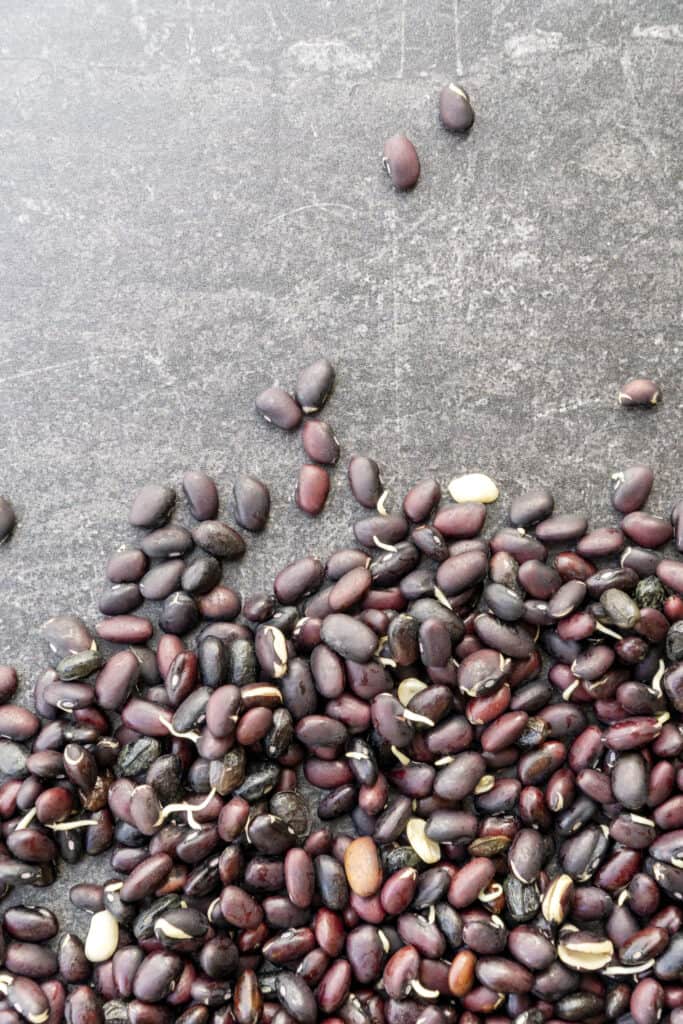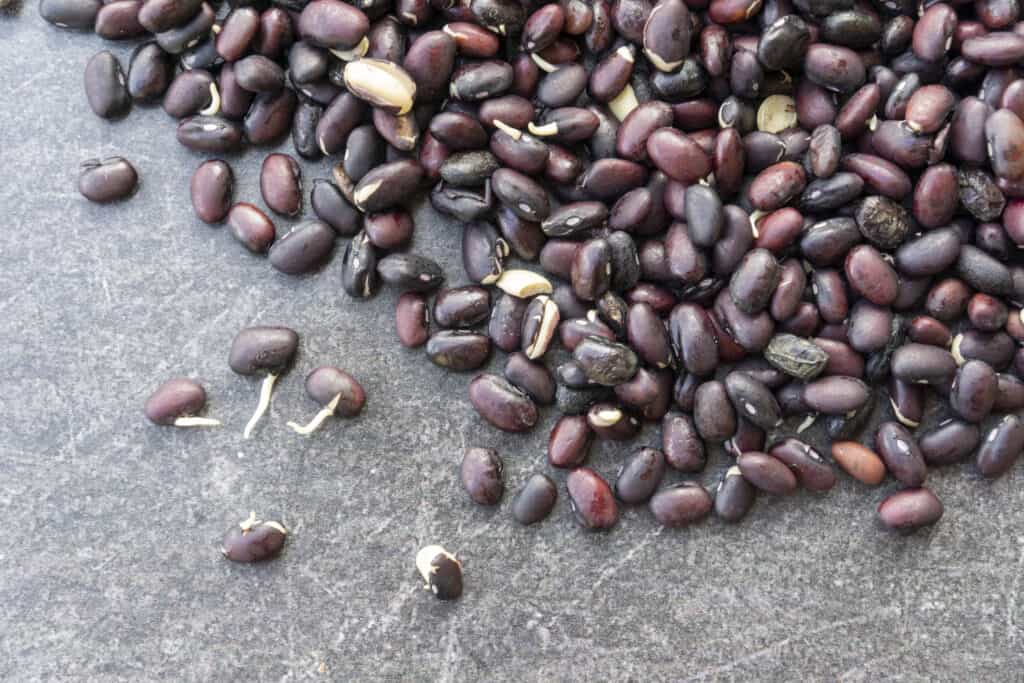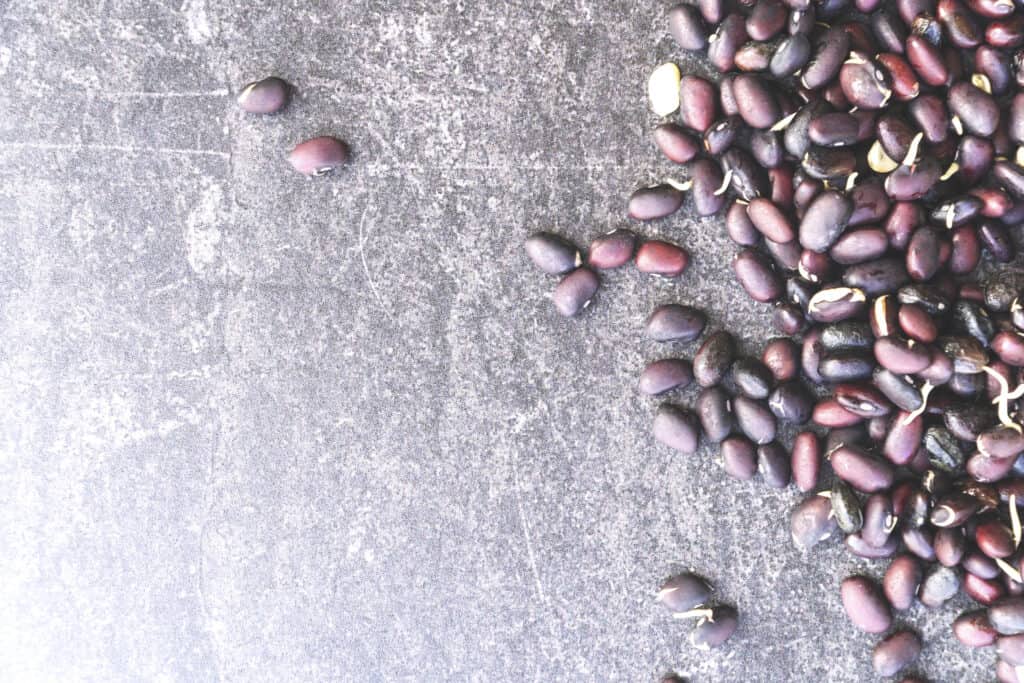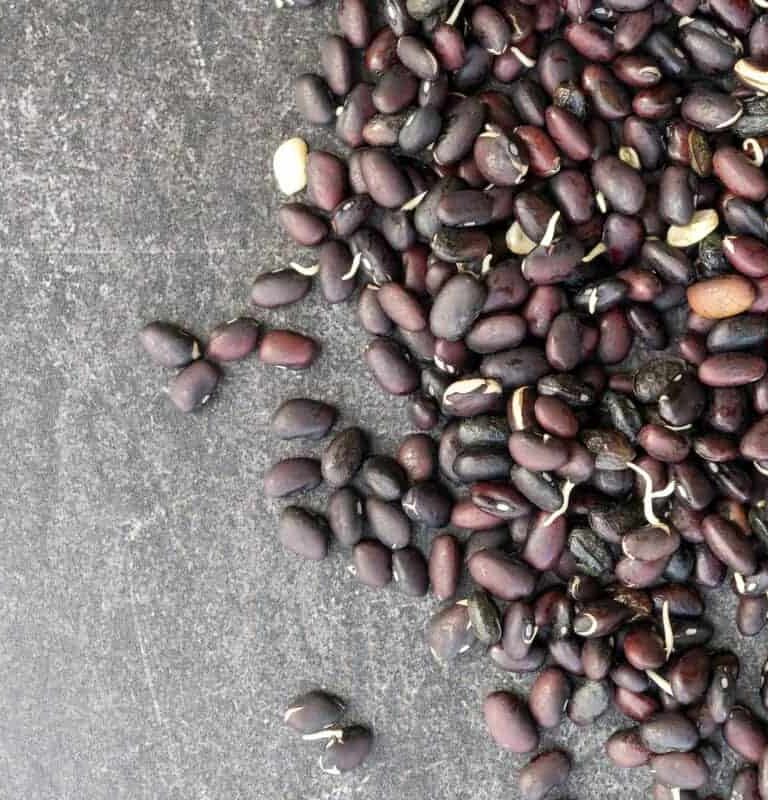Soaking and sprouting legumes make the beans easier to digest and the nutrients inside more bioavailable.
This article will tell you why it’s worth soaking and sprouting beans and how to soak and sprout legumes!
The Journey to Sprouting
My entrance into this topic was less than scientific and a bit anecdotal, but after some personal testing and additional research, I’m a convert.
After cutting out legumes because I didn’t feel well after eating them, a colleague asked me how I was preparing them. The answer, at the time, was heating up canned beans or just boiling the dried legumes.
Therein lies the problem.
According to her and my research, all legumes should be soaked and sprouted before eating to make them easier to digest.
In certain situations, sprouted beans cook faster. In general, they make you feel better than unsprouted legumes and they have higher nutrition.
But before we get into how to sprout legumes, let’s talk a little more about why we should.

First, what are Legumes?
Legumes are a type of plant in the Fabaceae (or Leguminosae) family. A legume is a seed, pod, or other edible parts of a leguminous plant, used as food. That includes peas, green beans, peanuts, and dried beans like navy, pinto, garbanzo, black, red, and kidney beans.
Why Soak?
Soaking preps the legumes to sprout. Beans are like seeds that would one day become plants if they were allowed to sprout and grow.
Soaking the beans in the dark mimics the wet environment those beans would experience in the soil and triggers them to sprout.
Why Sprout?
Sprouting is the process of germinating seeds, or in other words, when the beans change from a protective capsule of a seed into a growing plant.
Chemical reactions inside the bean allow the plant to use some of the beans’ nutrients to grow into a plant.
Dried Legumes are More Environmentally Friendly
In addition to improving the nutritional value of the beans, you can also avoid harmful bisphenol lining found in most cans and reduce waste by purchasing from the bulk bins!
Purchasing bulk beans or dried beans typically involves less packaging, especially if you are using reusable bags.
Sprouting improves the nutritional benefits of legumes
Sprouting legumes enhances the bioavailability and digestibility of nutrients and therefore plays an important role in human nutrition, as shown in this study on the black eye peas. More importantly, the sprouting process also reduces anti-nutrients like phytic acid, which can impair the absorption of iron, zinc, and calcium and may promote mineral deficiencies and trypsin inhibitor activity (TIA) which interferes with digestion.
Sprouting chelates minerals, which means they attach to proteins that increase their functions in the body. Sprouting can also increase a compound called GABA which has been shown to regulate blood pressure.

How to Soak and Sprout Your Beans:
Prepare Ahead: Know the Right Amount of Time
Most beans should be soaked for 8-12 hours. The best way to do this is to soak the beans overnight or during the workday.
Chick Peas and White Beans will soak sufficiently in a shorter time and you can get away with 4 hours for chickpeas and 6 for white beans. Red and black beans require more time and should both soak for 8 hours minimum.
Ideally, all beans should soak for 8-9 hours, which coincides nicely with a sleep overnight or a traditional workday.
| Soak Time | Sprout Time | |
| Chickpeas | 4-6 hours | 6-8 hours |
| White Beans | 6-8 hours | 8-12 hours |
| Black Beans | 8-12 hours | 12-15 hours |
| Pinto Beans | 8-12 hours | 15-18 hours |
| Red Kidney Beans | 8-12 hours | 15-18 hours |
Choose the Right Container
Make sure that there is plenty of water on top of the beans to allow room for the beans to expand.
The beans will double in size. A Large bowl works best. Don’t use a mason jar as the beans might expand and get stuck in the jar without enough room to completely expand.
In other words, use a big bowl made of ceramic or glass that’s at least double the size of your beans.
Soaking the Beans
How to Soak Beans
Place dried beans in a large glass bowl and cover with water. Then cover with a dish towel, making sure the towel doesn’t drip into the beans or water.
The dishtowel prevents anything from falling into the beans and keeps it dark which simulates the soil environment.
Sprouting the Beans
Believe it or not, this step is even easier than the first. Just drain the soaked seeds, cover, and wait.
You’ll want to drain the legumes fully. Gently stir the beans around to let air get to all of the beans.
Leave the beans in the same large bowl that you used to soak them. Cover the drained beans with a dish towel and wait another 12-18 hours. The specific time will depend on the beans. Chickpeas and white beans sprout relatively quickly but black beans and red beans take a little longer.
In Summary
- Cover the beans in water and then with a dishtowel. Let sit for 8-12 hours
- Drain
- Cover and let sit for 12-18 hours while they sprout

Use your New Knowledge:
Make use of your new skills and make this Red Beans and Rice recipe!
Or try this warming White Bean Green Chili. Or Homemade Sprouted Hummus!

How to Sprout Beans
Description
Soaking and sprouting legumes make beans easier to digest and the nutrients inside more bioavailable.
Ingredients
Instructions
-
Cover the beans in water in the bowl. Cover with a dishtowel. Let sit for 8-12 hours
-
Drain
-
Cover the drained beans and let sit for 12-18 hours while they sprout
Note
Make sure that the dishtowel used to cover the beans in the soaking and sprouting stage does not touch the water or the beans



User Reviews